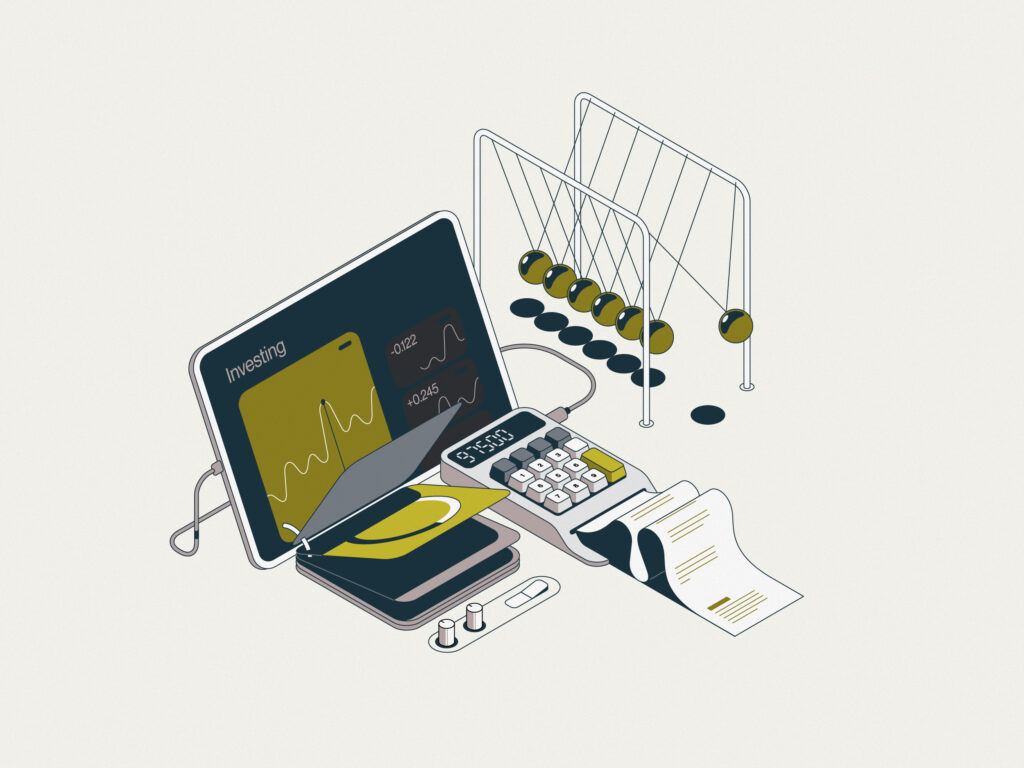And we know we don’t need to tell you that—we’ve all been on this trip together. “Long” is the operative and ironic word, here, given that the past month has in many ways felt like years as we have ridden out the storms of each day and each week in an environment so foreign that it is hard to remember what “normal” felt like just a calendar page ago. While this newsletter is typically a time to look back at the prior quarter and give a quick nod to what’s on the horizon, I’d like to take the time to give a more straightforward look into our current working outlook and behavior in order to continue to be as transparent and communicative as possible. In fact, for those of you who participated in the client conference call about our market outlook a couple of weeks ago, you gave us great feedback about what questions you still have and what you’d most like to hear from us. I want you to know that we hear you loud and clear, and I’m going to take the time to answer some of your questions here.
Our Asset Allocation
First, you want to hear about our current asset allocation in balanced portfolios of both stocks and bonds. Starting in the summer of 2019, we started viewing the market as priced to perfection with what seemed like very little room for error. This made us nervous about any kind of crack making investors run for the hills. That is why we made the decision to be overweight fixed income and hold a little more cash in our balanced portfolios. It’s important to note that this decision was not made in light of the current crisis (that would have been essentially impossible to predict); it was merely based in risky market valuation levels at the time. This has helped us weather this downturn slightly better than if we had been at a neutral weighting heading into 2020. We have been very slowly raising the equity exposure back to neutral, and we will likely continue to do so cautiously and deliberately, but with reliance on a lot of important factors such as Q1 corporate earnings, any clarity on forward earnings estimates we can ascertain, and developments about the economy reopening. It would be imprudent to simply pick a date to rebalance fully back to neutral—we’re taking our time and feel positive about our ability to deploy cash as we see fit.
Our High Trading Volume
Further—for those of you that have portfolios managed with individual securities, you want to learn more about the buying and selling happening in your equity portfolios. You want to understand why, if the entire stock market is suffering, we wouldn’t simply ride out the storm with our prior holdings. The answer to this question begins in the second half of last year when we retooled the equity portfolios a bit towards a value bent to benefit from what we believed would be a cyclical recovery. We started to see this recovery come to fruition in mid-November, and our strategy helped us pick up a good deal of relative ground over the last six weeks of 2019.
Unfortunately, that recovery came to a halt with the advent of the COVID-19 crisis, and the equity portfolios we had were not positioned for a material slowdown of this nature. Therefore, we felt it most prudent to change the makeup of our portfolios to better position ourselves for the current environment. While it is true that it feels like the entire stock market is taking a beating, we do not believe the depth of decline and the pace of recovery will be equivalent across all names. This is what has driven us to acquire higher quality names that we believe are uniquely positioned to perform well over the next 3-5 years. Moreover, this widespread market decline provided us an opportunity to purchase companies that we believed were previously too expensive to acquire, so we used the declines to be strategically timely about our acquisitions. In essence: if in 2019 we made a decision to be tactical and take advantage of a short-term cyclical shift, in 2020 we are making a decision to be more strategic and longer-term with our portfolio construction.
Our Company-Specific Theses
So, what does this strategy actually look like, as it relates to specific stocks we’ve been acquiring? We find it helpful to look at a couple of recent purchases in some of our main equity strategies through three COVID-19 crisis lenses to illustrate why we feel confident in our decision making.
Through a first lens, we are searching for companies with business models that are immune to and/ or less impacted by COVID-19 economic weakness. The pharma sector, in particular, stands out due to its high quality, defensive business model well-suited to withstand economic pressure. In many instances, pharma products are used to treat critical or life-threatening conditions and, as such, demand is inelastic and resilient. Within pharma, we view Pfizer as attractive for several reasons. First, many of Pfizer’s drugs are used in critical indications (ex: Ibrance for breast cancer). Secondly, Pfizer has material upside potential from both internal (pipeline and indication expansion) and external (bolt-on acquisitions financed by a strong balance sheet) sources. It has multiple avenues to drive share price upside. Pfizer also trades at a discount to its large cap pharma peer group. We don’t believe this is appropriate given its improving story centered on revitalized future sales and earnings growth prospects, as well as margin upside potential. Furthermore, the company’s Prevnar product is used to treat pneumonia which is often found in COVID-19 cases. All of these factors were part of the decision to invest in Pfizer.
Through a second lens, we are searching for companies that are impacted by COVID-19 and have already experienced share price declines, which presents an opportunity for purchase. Pepsi is a recent example that falls into this category. At the time of purchase, Pepsi was down roughly 25% from its peak earlier this year. The company was trading near multi-year lows across several valuation metrics. At that price point, we felt that risk-reward was skewed in our favor given the merits of Pepsi’s business. While the company will likely see a negative sales impact from COVID-19 due to decreases in on-premise consumption (office buildings, vending machines, restaurants), we believe that the decline in share price provided an excellent opportunity to take a position in a very high-quality company. Pepsi has exposure to on-premise consumption, but the majority of its sales are through channels that will remain open during COVID-19 restrictions (supermarkets, membership warehouse clubs, convenience stores, etc.). In particular, the company’s snack businesses (ex: Frito-Lay) have limited exposure to on-premise consumption, which boosts its overall defensiveness. In addition to defensive posturing, we believe that Pepsi has the ability to participate in market recovery upside thanks to its revamped beverage portfolio and dominance in snacking. As such, Pepsi has better growth prospects than the industry average. Collectively, the price decline paired with the quality of Pepsi’s business led to our purchase.
The third lens looks at those stocks that have the most direct exposure to stay-at-home orders and closures of large portions of the economy, severely impacting the stock price, but that possess very good operating models and are severely undervalued. Industries that fall into this category include restaurants, retail, and travel and leisure related names. This category is very much still a minefield, as you can imagine, so we are being extra cautious and haven’t yet made any calls here. However, Delta Air Lines is an example of a typical company in this group that we would look at for a potential purchase. Air travel demand has fallen drastically as a result of the response to the virus, and demand continues to be impacted. But people will continue to fly, and at some point, demand will return. It may not return all at once in the very near future, but over the long term, demand will return. There will likely be a price that discounts these negatives and could present an attractive potential risk-reward and entry point.
How We’re Viewing the Economy
Lastly, you want to know how we are thinking about the current environment and how our views evolve based on various scenarios and contingencies. We can tell you that the pace of the reopening of the economy is the key metric we are watching—probably the number one thing keeping us up at night, from an economic and market perspective. We closely watch the marginal hospital admittance rates because that is the best real-time assessment of the speed of the COVID-19 spread. It is slowing, which is a good sign of course for several reasons. There is no chance that the economy will begin to reopen unless this metric is down for a while and stays down. If it becomes clear that COVID-19 is still spreading uncontrolled (which we do not see as likely given all the evidence currently available) over the next few weeks, then the reopening of the economy likely can’t take place until Q3—July, say. If this is the case, the markets will certainly decline from here and will almost certainly re-test the lows we saw in mid- March. We don’t have much else that we’re looking to sell in the portfolios, but we would use that opportunity to fully utilize our cash.
Onward and (hopefully) Upward
In terms of economic stats, we believe that they will need to be taken with a large grain of salt for the next few months, as they will likely be dismal and out of the realm of real historical value. Further, it is very hard to get a gauge on corporate profitability going forward, as almost all companies are refraining from giving forward guidance (companies are not required to give forward guidance; it’s just something that has become commonplace and so mostly expected of corporations by investors). As we all know, there is no perfect historical precedent for this crisis, but we do not believe there has been a time where an economy has crashed to a halt within a month, especially when caused by an exogenous factor that has nothing to do with the normal business/interest rate cycle. This is why, again, business reopening is crucial, as is the pace of additional government fiscal stimulus. A recession will be difficult to avoid at this point, but a deep recession is certainly avoidable if business as usual can reopen in the near future—read: spring, not summer; Q2, not Q3. If this timeline changes drastically, our views about what a recovery will look like likely will, too. However, rest assured we believe our current positioning is long-term in nature and therefore well-suited for any type of downturn and ensuing recovery—whether V-shaped and quick, or U-shaped and more drawn out.
In summary, we believe we need to keep our noses to the grindstone, as well as our chins up and eyes on the horizon. We continue to think about our clients first and foremost, and it is your trust that keeps us working hard every day. We hope your families are staying safe and healthy during this tough time.






